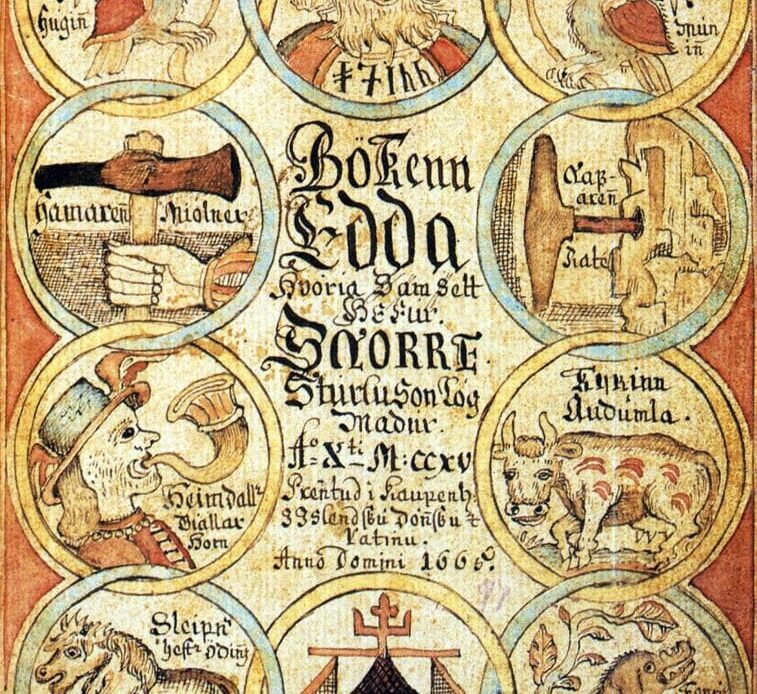Bibliophiles the world over cherish the legend of Jólabókaflóð, Iceland’s “Christmas book flood” in which publishers release new titles in time for the holidays. As the story goes, each and every citizen of the remote, ultra-literary nation then gifts and receives books. After they unwrap presents with family and friends on December 24, they curl up with steaming cups of hot chocolate and read long into the subarctic night.
Now, Icelanders the country over don’t all partake in those rituals, but the Jólabókaflóð and the traditions it illustrates aren’t fiction, either. “As with all generalizations about nations and their traditions, there’s a grain of truth to it, but it’s not that simple,” says Gréta Sigríður Einarsdóttir, editor of Iceland Review, the longest-running English-language magazine focused on the country. The real story unfolds like this.
The Poetic Edda is a collection of Old Norse poems primarily preserved in the Icelandic mediaeval manuscript Codex Regius.
Pictures From History/Universal Images Group via Getty Images
Iceland’s first literature
Since the 12th century, writers have been recording the history of Iceland. That literary history first took the form of sagas—rollicking, poetic accounts of Iceland’s earliest inhabitants and rulers that were composed centuries later by mostly unknown authors. Iceland’s initial independence—and the Icelandic Commonwealth that began when its Alþingi, or national legislature, was established in 930—ended in the late 13th century when it fell under Norwegian and eventually Danish rule. The stories its people composed and told each other of those early and relatively prosperous centuries were points of light in the darkness of the brutal colonial era that followed. The Little Ice Age, a catastrophic cooling of the North Atlantic region that caused crop failure, starvation and pandemics, and lasted for hundreds of years, decimated the population again and again. Resources were limited and scarce, and most families practiced subsistence farming in near solitude. “The very survival of this isolated people during the misery of the five centuries circa 1300-1800 has sometimes been attributed to the sustenance provided by their history, poetry and literature,” wrote sociologist and Iceland scholar Richard F. Tomasson in “The Literacy of the Icelanders,” a paper published in…
Click Here to Read the Full Original Article at Travel | smithsonianmag.com…
